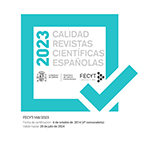Las dimensiones de género en la investigación sobre turismo: Temas globales, perspectivas locales
Resumen
La perspectiva de género en los Estudios de Turismo ha evolucionado desde un enfoque de «añádanse mujeres y agítese» a estudios diversos que se apoyan en la teoría feminista plasmada en una fértil literatura internacional. En este artículo empezaré revisando y atendiendo a los diferentes significados en disputa de género en tanto que concepto que sigue inspirando la teorización sobre las relaciones entre los hombres y las mujeres, sus identidades y sus actividades. Veremos cómo las intersecciones del género con otras formas de categorizar las diferencias como la etnicidad, la edad, la clase, la sexualidad o la nacionalidad se manifiestan en diseños complejos de ideas culturales y relaciones sociales. En nuestro campo, los investigadores analizan los entornos del turismo sexuado y la construcción de relaciones de poder en función del género en los sistemas de turismo. Nos estamos enfrentando a cuestiones que tienen que ver con la ética en el turismo sexual, las desigualdades en la producción, marketing y consumo del turismo y su disfrute sexuado en función de las ideas sobre la masculinidad y la feminidad. Estas preguntas urgentes sobre la equidad de género se plantean en los contextos de temas globales como la acumulación de capital, el movimiento de la población, los recursos medioambientales naturales, la tecnología de la información, la cultura popular y la seguridad. Las percepciones de género locales ofrecen bases para analizar pormenorizadamente estudios de caso y para realizar investigaciones comparativas. A partir de ideas relativas a la encarnación, un término bastante frecuente aunque a menudo oscuro, ha ido emergiendo un enfoque fructífero. Los cuerpos representan lo local por excelencia. Aquí, las tensiones globales y locales se codifican y representan en un espacio individual. El artículo termina con una discusión sobre lo que una teoría sobre el cuerpo puede suponer para la producción de conocimiento en los estudios de turismo, siendo también nosotros investigadores corpóreos.Descargas
Descarga artículo
Licencia
La revista Política y Sociedad, para fomentar el intercambio global del conocimiento, facilita el acceso sin restricciones a sus contenidos desde el momento de su publicación en la presente edición electrónica, y por eso es una revista de acceso abierto. Los originales publicados en esta revista son propiedad de la Universidad Complutense de Madrid y es obligatorio citar su procedencia en cualquier reproducción total o parcial. Todos los contenidos se distribuyen bajo una licencia de uso y distribución Creative Commons Reconocimiento 4.0 (CC BY 4.0). Esta circunstancia ha de hacerse constar expresamente de esta forma cuando sea necesario. Puede consultar la versión informativa y el texto legal de la licencia.











